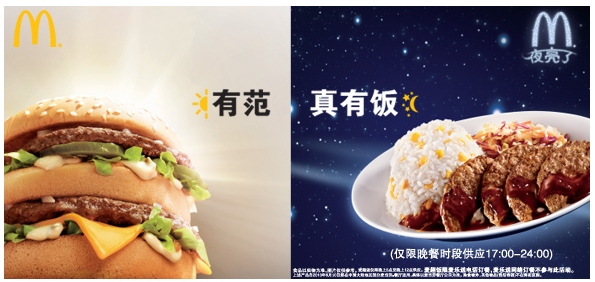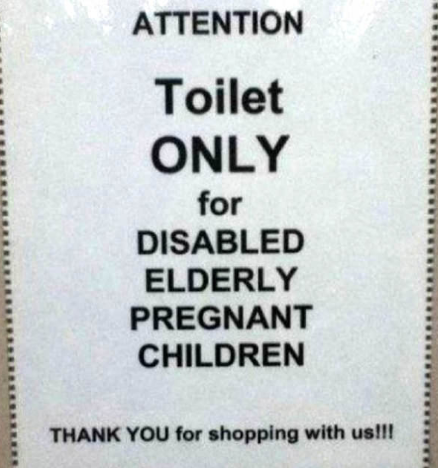Remember that time a major toothpaste brand decided to branch out into manufacturing frozen dinners?
While it’s a little-known marketing mistake from many years ago, the story is true. One of the biggest names in toothpaste got into the TV dinner business, and failed. It also created a temporary drop in their toothpaste sales. Apparently, no one wants to think of brushing their teeth when they’re eating frozen food.
The lesson here is really about brand consistency. You need to be who your customers expect you to be. This means staying with oral hygiene products if that’s what you’re known for. If you’re a distributed restaurant brand in the business of serving the spiciest burritos known to mankind, a new line of sugary pastries might not fly with customers.
Brand consistency is the reason that some of the world’s best-known organizations spend billions each year on the top ad agencies and advertising. It’s about hiring teams of seriously smart people to iterate on logo design and visual identity, to create new and exciting ways to present the same old thing. Because consumers “trust” what they know, and any variation from the brand they’ve grown to trust is an invasion of this trust.
Distributed Marketing Consistency Isn’t Easy
As a brand manager at a distributed organization, consistency is both your biggest challenge and the greatest measure of your success. If you’re in charge of branding for a global network of thousands of local outlets, your reach is massive. This is all the more reason to make sure your logo, colors, font, and messaging are the same in Dubai as in Dublin.
Here’s the tricky part, though. Your global network of local marketers means more potential points of failure for your branding efforts. Each of these franchise owners or dealership marketers has the potential to dilute your brand, or modify your assets in ways that just don’t look like your visual identity.
Consistency is one of your greatest assets and your distributed marketers could put it at risk.
Turning your customers into repeat, loyal buyers requires the right balance of consistency. It also requires your local partners to nail this balance, every time. Read on to learn how real brands walk this very fine line.
Understand Creative Tension
Your brand can’t always be the same thing to everyone. That’s why the smartest distributed brands make slight modifications to their presentation for each local market. Several years ago, McDonald’s made the bold move to add rice bowls and wraps to their menu in China. While rice is not a traditional part of the fast food chain’s menu, their market research revealed it was something their Asian customers needed to have to feel like they were getting a great meal.
image via: http://louisexu204.blogspot.com
This decision is a great example of brand consistency done right. Tweak the menu so new customers can “love it,” while fiercely protecting visual identity and other brand elements.
Misaligned Goals Kill Consistency
Brand consistency isn’t necessarily a failure of your local marketer’s graphic design skills, though that can certainly play a role. Most often, the issue has deeper roots that are largely cultural. If your brand management team and your local partners have different objectives, you’re going to end up with inconsistent local advertising.
If your franchisee feels you don’t “get” their market, they may be tempted to go off the beaten path and design their own store signage that doesn’t look like your brand. At many organizations, there are no systems in place to know when this is starting to happen. Brand managers may not have any inclination their local partners have gone rogue until sales start to slide. Customers feel the subtle shift in brand identity and begin to lose trust.
image via: http://ilively.com/
Local Marketers Mean Well
The first step towards improved consistency is understanding that both head office and local outlets are all working towards the same goal. You and your local partners are both trying to generate sales. Chances are, their in-store poster that looks like it was designed with Comic Sans, or early Microsoft Paint, is trying to provide value to their buyers. The local marketer may even have an idea that could transform your brand. They just have the wrong method of execution.
It’s hard to not recoil when you see some of the worst examples of local marketing in the wild. However, it’s important for brand managers to look past the execution to the intent. By learning why your local marketer decided to take advertising into your own hands, you may learn a lot about how you can improve the support you give them.
What are the most cringe-worthy instances of local marketing, definitely not approved by the brand management team? Read Misadventures in Brand Management: 6 Ways Brand Marketing Can Fall Apart and find out.
Understand What Marketing Consistency Looks Like For You
For many distributed brands, consistency fits within a fairly well-defined niche of marketing execution. When a local marketer turns one of your brand templates into advertising, it’s probably going to have the same headline, hero image, and offer that your designer put into an approved layout. It’s going to look like a poster or email that’s from your brand, but it may include your local partner’s address or headshot.
There’s obviously some room for variation here. Your definition of consistency may include providing your local dealers with permission to use your stock photography alongside photos of your competitors' models. You may give your local outlets permission to subtract 5% off your nationally recommended discount. However, the execution should still reflect the quality, experience, and “look” your brand is globally known for.
Templates are the Brand Manager's Secret Weapon
The answer to the question, “How do I achieve brand consistency” is templates.
By turning your national marketing assets into easy-to-modify templates for local marketers, you can improve brand consistency while supporting the local outlet's need for creativity and locally-relevant content.
The right tool for local marketing automation (LMA) will provide brand managers with significant freedom in template creation; including, the ability to determine which elements of your marketing assets are:
- “Restricted” or locked template content, such as a logo or colors that cannot be modified by partners.
- “Variable” or unlocked template content, so local dealers can modify contact information, their dealership name or logo, and other local information.
Your definition of restricted and variable fields may vary from campaign to campaign, and the right LMA tool will support this. Whether your local partners are allowed to add their own imagery, tagline, or contact information, templates will protect consistency.
Explore this concept in-depth at Creating and Managing Marketing Collateral Templates Local Dealers Love.
Brand Managers: Marketing Consistency isn’t Black-and-White
For the most successful distributed brands, branding is a two-way street. Branding flows down, from your brand management team and your expert agency partners. It should also flow up from your local affiliates, who translate their daily interactions with customers into some of the smartest marketing ideas you’ll uncover. It’s your job to nurture these raw ideas into campaigns and creative marketing assets.
While a brand manager’s job is to obsessively safeguard their brand against being diluted or damaged, it’s also their job to recognize the fact that branding is an ongoing practice. Translating your local outlets' best ideas into creative assets and campaigns should be high on your "to-do" list. With a tool like CampaignDrive by Pica9, creating templates that allow your local marketers to balance creativity and freedom is possible.
Ever wonder how distributed brands like Marriott achieve the right balance of brand consistency and local flair on a global scale? To discover their secrets, we recommend our free eBook Distributed Marketing on Steroids: The Brand Manager’s Guide to Designing and Managing Local Marketing Assets without Breaking a Sweat.






